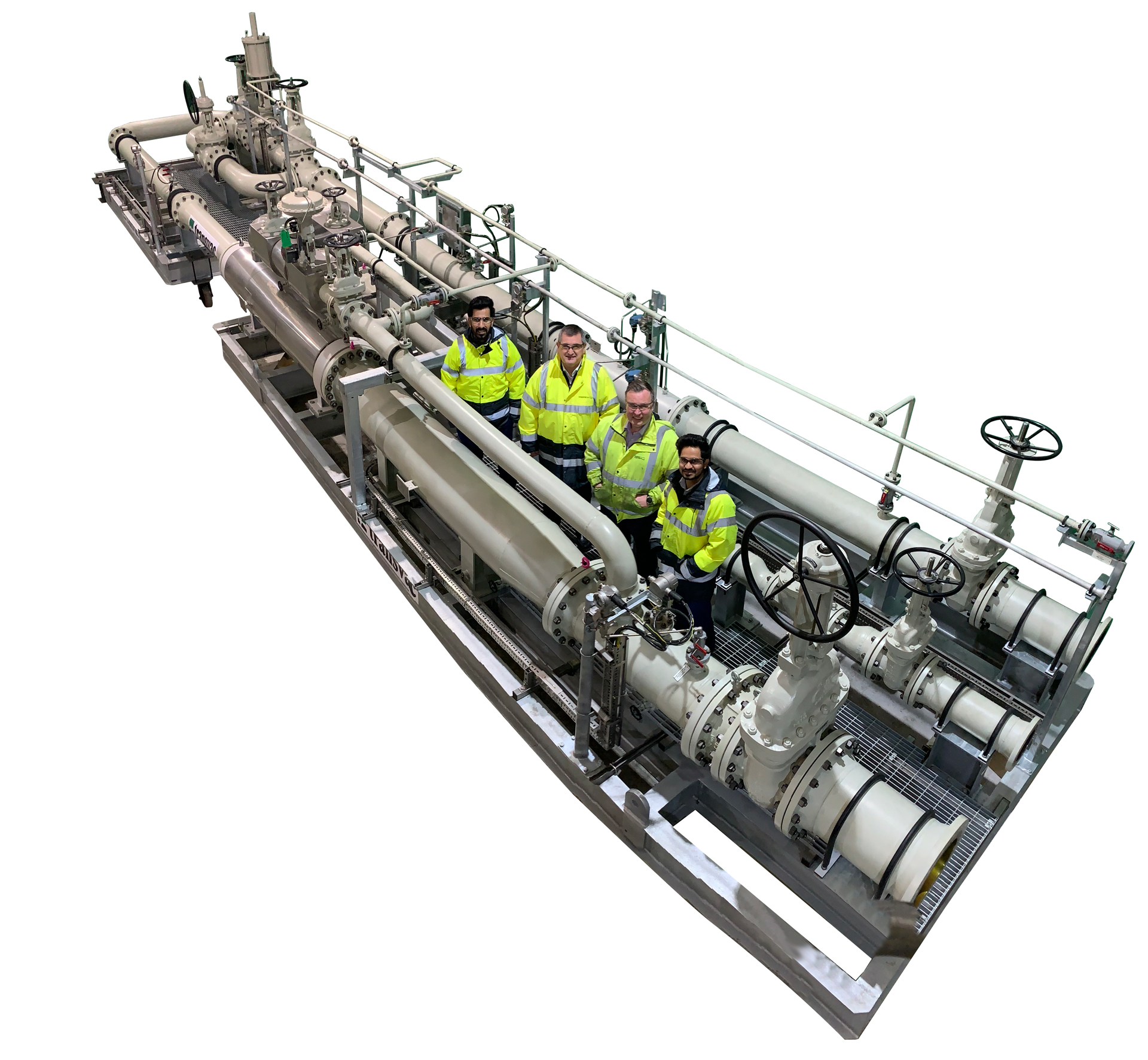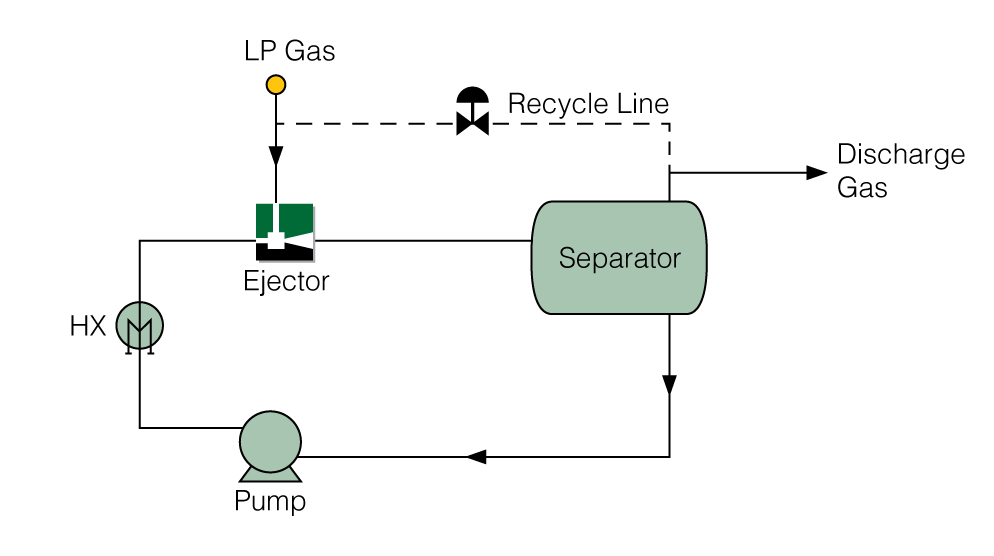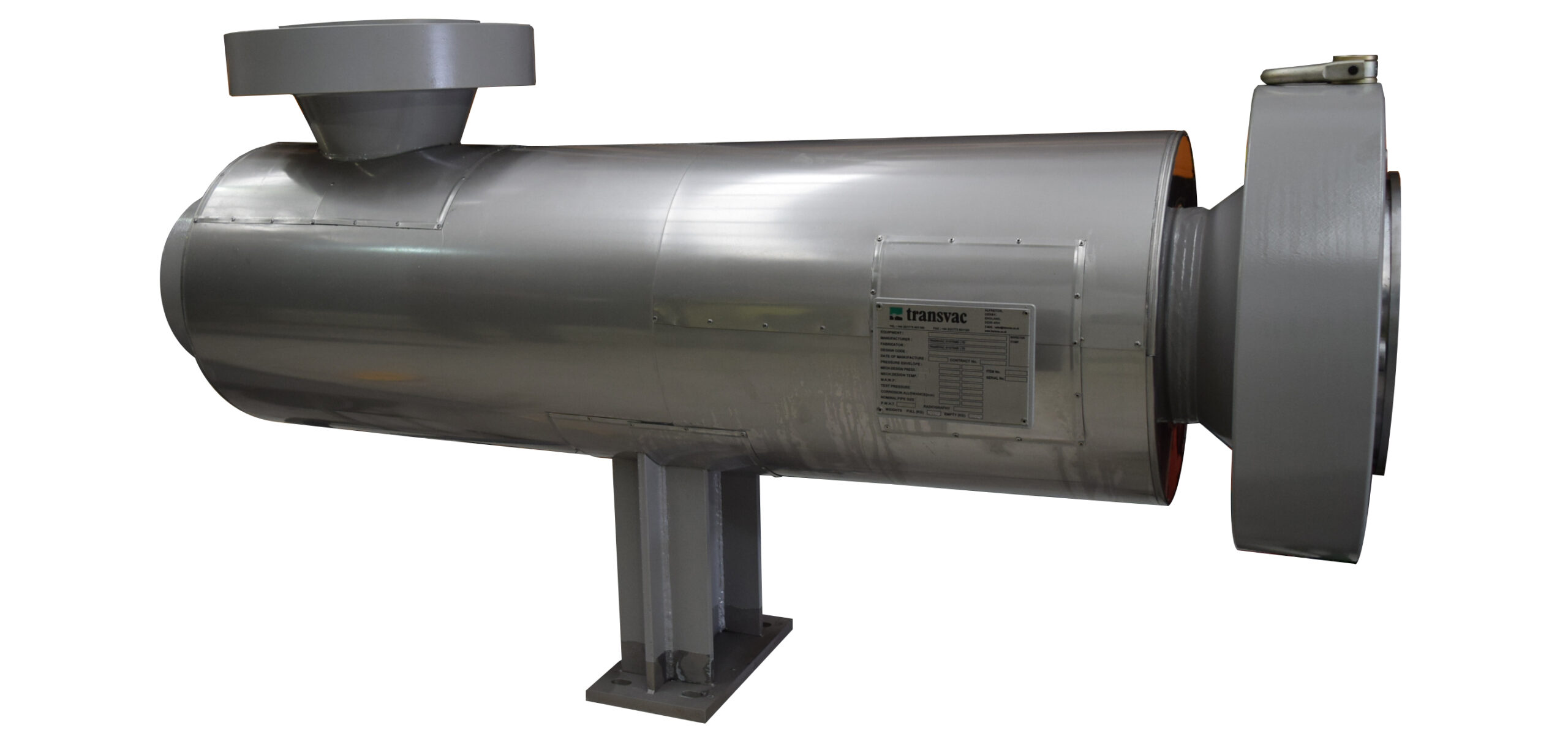Ejectors are static, pipework-based compressors. As such, they are ideally suited to Gas Compression as they have no moving parts, require zero maintenance and can be installed in the same way as regular pipework. This simple design makes Ejectors very cost effective when compared to traditional compressors and well suited to ‘regions of conflict’ where equipment maintenance often requires expensive security considerations.
Ejectors use a high pressure ‘motive’ stream to drive their operation. In many cases, they can utilise existing or ‘waste’ gas or liquid streams to allow them to operate. For projects where existing high-pressure gas or liquids are readily available, the use of Ejector technology becomes a ‘no-brainer’ when compared with mechanical gas compression technologies. This opportunity to use waste energy is unique to Ejectors and makes a compelling business case with respect to OPEX and CAPEX, as no ‘new energy’ is required to run the Ejector.
Ejectors are commonly used to replace, or as an alternative to;

Historically, Ejector liquid driven Ejectors have been regarded as novel, but inefficient devices and the running costs were not competitive with equivalent rotating compressors.
In recent years, through its ongoing long-term Product Development Programme in our Research & Development facility, Transvac has significantly increased the efficiency of its liquid-driven Ejectors and in some cases, over 50% reduction in pump power requirements has been achieved.
For projects where existing waste motive liquid streams are not available and a pump is needed to drive the Ejector, it can now be done economically. With these ground-breaking efficiency improvements, Transvac’s new Ejector designs oftenrequire less power than traditional mechanical compressors. When other key benefits are considered, such as reliability, negligible maintenance and simplicity, the drivers to use liquid motivated Ejector technology are compelling. This has been key to many recent project awards, where Ejectors are now firmly the preferred gas compression solutions over traditional compressors.
In situations where a high-pressure motive liquid stream is not readily available a Transvac Liquid Ejector Recirculation Package is the solution.
Rotating gas compressors are often unreliable and fail because of sour and/or acidic process gas or a build-up of contaminants, such as waxes, solids or black powder. However, it is important to note that a Liquid Ejector system pump is reliable because it is just pumping liquid with no gas passing through it. The gas compressor is a static Ejector which can be constructed from materials to suit the process gas composition.
Transvac’s experience is that maintenance teams are not concerned about routine pump maintenance, but they do have issues with the specialist maintenance costs and unreliability of mechanical compressors.
Contact between the liquid and gas streams within the Ejector scrubs the process gas and removes some contaminants as well as cooling it.

Although the addition of a pump introduces a moving/rotating piece of equipment, it is important to note that the process gas stream does not pass through it – rather it is just a filtered liquid stream.
Rotating compression equipment usually fails or requires maintenance as waxes, solids, black powder etc build up inside the compressor. Further, the material can be corroded due to attack from sour or acidic gas streams. The Ejector does not suffer from build up of contaminants, due to its simple construction and the higher velocities as the process gas passes through it.
Transvac has vast experience in selecting appropriate materials of construction for Ejectors, which often includes a special-grade ceramic for LJC Ejector applications to resist abrasion, and exotic materials for sour service.
If there is a source of existing high-pressure gas that can be used to drive an Ejector it is usually the most economical form of gas compression and there are many opportunities to use waste or excess energy gas in oil & gas.
For example: High-pressure, gas energy from an existing mechanical Compressor that is normally wasted across an anti-surge valve, when in recycle mode, can be used to drive a Gas Ejector.
Other sources of available / waste high-pressure gas that can be used to drive a Gas Ejector including:

Gas Ejector for Compressing excess Sales Gas for Reservoir Storage
Ejectors offer a wide range of advantages over competing gas compression equipment. This table, which makes a comparison with both liquid-ring and dry screw compressors highlights just a few of these advantages. It is clear that the case to consider Ejectors over other compression equipment is compelling. Where Ejectors can be driven by waste energy, they can be considered a ‘no brainer’ choice!